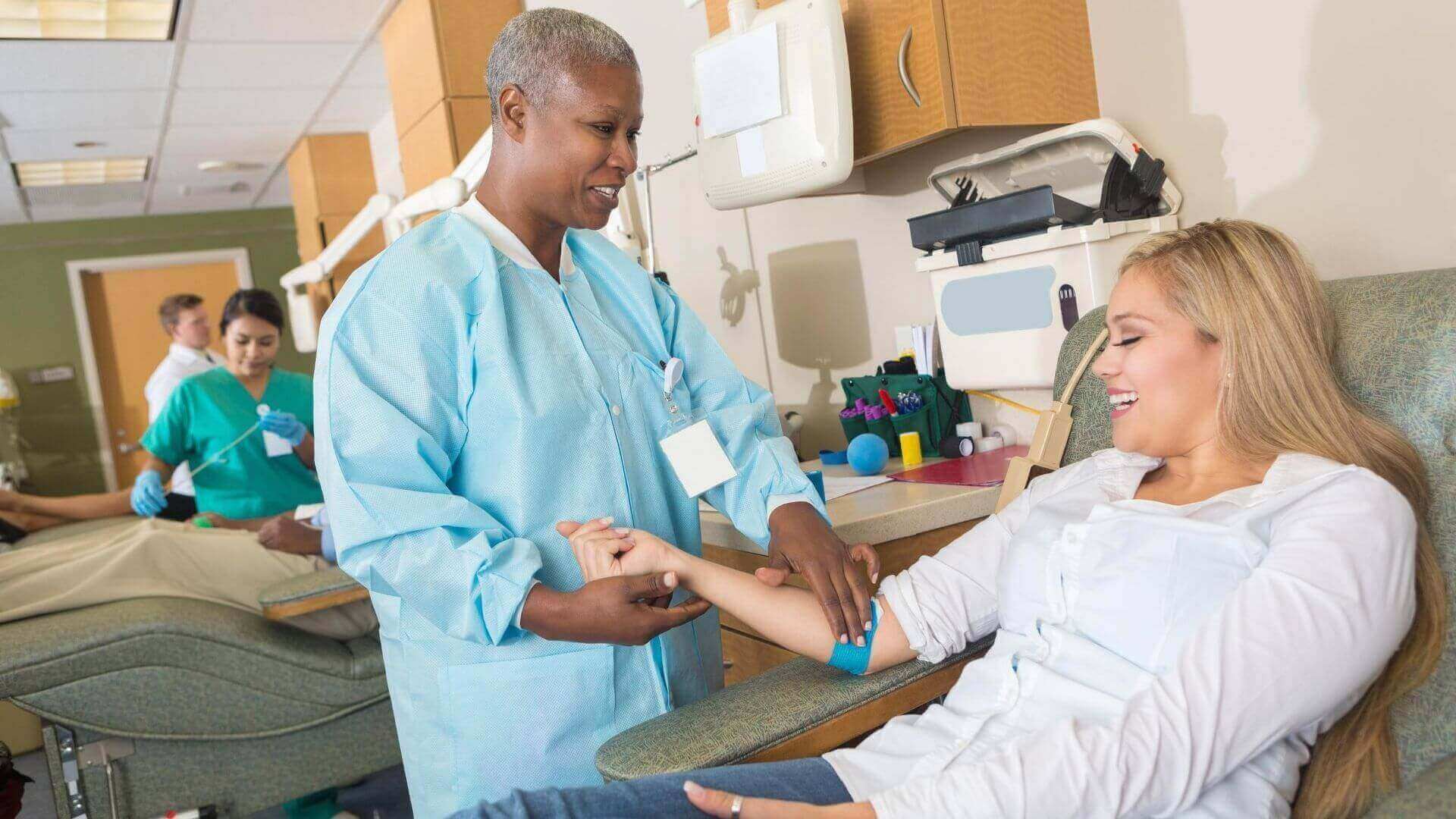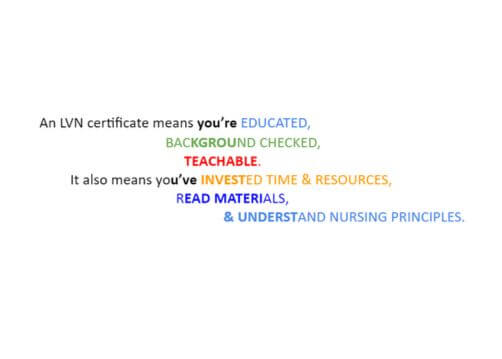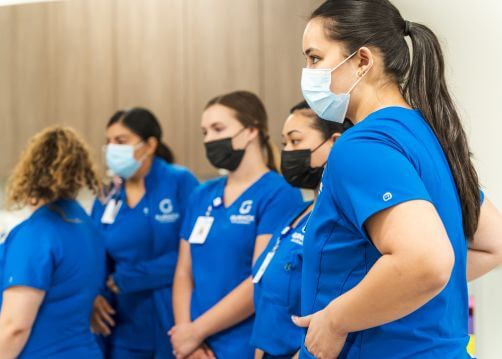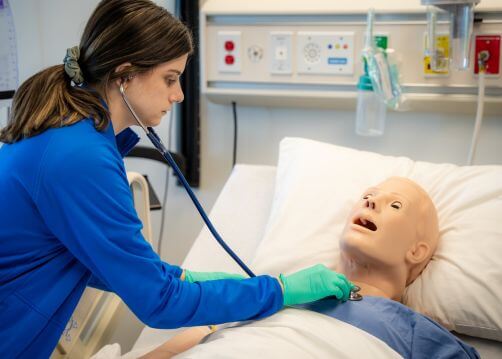How to Choose A Healthcare Profession: PHL, LVN, CNA
Date: June 13, 2022
Who are Phlebotomists? What is a Licensed Vocational Nurse? And just what is the difference between a Licensed Vocational Nurse and a Certified Nursing Assistant? Are you interested in a healthcare vocation yet don’t know where to begin or how to make sense of wellness terms? This article focuses on three different entry-level healthcare professions, Licensed Vocational Nurses (LVNs), Certified Nursing Assistants (CNAs), and Certified Phlebotomists (PHLs), to help you obtain information before enrolling in a healthcare program.
What is a Phlebotomist? (Certificate Program)
Phlebotomy (PHL) is chiefly concerned with collecting samples and drawing blood for later analysis in clinical laboratories. These professionals draw samples for tests, transfusions, research, or blood donations.1 Only four US states require phlebotomy certifications or licenses to draw blood.2 However, most employers hire only PHLs with valid certification.3 California is one of four US states requiring PHL certification. The state requires training, clinical practice, written examination, and certification renewal every two years.3 Further, California* has three levels of certification. These levels are as follows:
-
- Limited Phlebotomy Technician (the lowest level).
- Certified Phlebotomy Technician One (requiring additional classes and training).
- Certified Phlebotomy Technician 2 (the highest level, requiring 1040 hours of experience).3

Phlebotomy Training
PHLs are trained to work in laboratories, clinics, and other healthcare-related facilities. Generally, these persons receive supervision from nurses and medical doctors. In some work environments, PHLs maintain patient records and conduct clerical work. These PHLs often perform front- and back-office skills, and many go on to further their educations and become Medical Assistants (MAs). (Of note, this combination of skills is frequently used in small offices.)
Phlebotomy Certification
PHL certification requires learning to use specific equipment such as vacuum tubes, syringes, and needles and practicing techniques for blood withdrawal. Other duties include cleaning medical equipment, disposing of biomedical waste, and giving medications and immunizations.4
Because one is in direct contact with patients, one should always learn to handle people tactfully and professionally.
Build Experiences
PHLs may want to build on their experiences to pursue other careers, such as launching from their foundations as MAs. These may include laboratory technicians, blood bank managers, and more. Depending on the scope and training one seeks, academic programs in phlebotomy can take 9–30 months to complete. Some schools and academies offer the training in as little as 10–12 weeks, including internships and labs.
What’s a Licensed Vocational Nurse? (Diploma or Degree Program)
Licensed Vocational Nurses (LVNs) primarily provide routine patient care. An LVN’s scope and duties range between states, even though the profession’s moniker is different. For example, some states use the term Licensed Practical Nurse (LPN), while others use the title Licensed Vocational Nurse (LVN).
Vocational Nurse Training
At the minimum, an LVN has less schooling than an RN. Officially, an RN has either a two-year Associate of Science Degree in Nursing or a four-year Bachelor of Science Degree in Nursing. By contrast, an LVN has the minimum entry-level diploma in Vocational Nursing or, at the next level, an Associate of Science Degree in Vocational Nursing. To become an LVN, one must first:
-
- Complete a Vocational Nursing program. Gurnick Academy of Medical Arts’ Diploma Program takes 13 months† to complete, while its Associate of Science in Vocational Nursing program takes eight (8) months to finish.‡
- Obtain a Vocational Nurse Diploma or an A.S. in Vocational Nursing.
- Sit for and pass the National Council Licensure Examination (NCLEX-PN).5
Licensed Vocational Nurse Work
Generally, LVNs work in hospitals, long-term care facilities, convalescent homes, doctor’s offices, or surgical centers. They provide essential core nursing services and primary patient care, with some tasks overlapping those registered nurses perform.
LVN Specifics
An LVN can be supervised by an RN or a medical doctor. Additionally, an LVN receives support from and may legally supervise a Certified Nursing Assistant (CNA), a nurses’ aide, an orderly, a patient-care technician, or a home health aide. In some states, LVNs are not permitted to start intravenous lines (IVs). In other states, they may obtain IV certification. However, most LVNs are allowed to withdraw blood and administer injections. An LVN typically observes patients, does charting and reporting, records vitals, administers medications, provides and assists with care, and more.
What is a Certified Nursing Assistant? (Diploma)
Working closely with patients, CNAs are responsible for practical care items such as bathing, grooming, and feeding. While the title and requirements for this vocation vary by state, it takes less education to become a CNA than it does to be an LVN or RN. Generally, to become a CNA, one must:
-
- Complete a state-approved educational program. (This varies by state, yet programs are usually 4–12 weeks long).
- Undergo on-the-job training.
- Pass a competency exam. (This varies by state.)
- Obtain state-issued licensure or certification. (Licensure varies by state.)1
CNA Work
Often, these individuals work in hospitals, rehabilitation centers, or nursing homes. CNAs receive supervision from LVNs, RNs, and medical doctors. A CNA can be supervised by LVNS, RNs, NPs, and medical doctors.
Generally, CNAs attend to practical tasks, including turning patients, answering patient calls, cleaning rooms, changing bed linens, dressing wounds, and communicating essential patient information to their respective teams. CNAs provide physical support to assist patients in specific routine living activities, such as getting out of bed, bathing, dressing, using the toilet, standing, walking, or exercising.6
Summary
Some PHLs, CNAs, and LVNs advance their educations and become RNs or NPs. Adding to one’s skill set takes time, experience, effort, and dedication to the chosen profession. Many public and private schools offer bridge programs to advanced nursing degrees, which may allow one to save time when pursuing an advanced degree. Whatever vocation one enters, one can know that all positions are valuable within their chosen healthcare community.~
*California currently only accepts national certificates from six agencies. These are the American Certification Agency, American Medical Technologists, American Society for Clinical Pathology, National Center for Competency Testing/Multi-skilled Medical Certification Institute, National Credentialing Agency, National Health Career Association, and the National Phlebotomy Certification Examination.7
†52 Approved Instructional Weeks
‡82 Approved Instructional Weeks include Technical Courses taken before enrolling in the 30 Weeks of General Education courses at Gurnick Academy of Medical Arts.
Citations:
1^a, b “Nursing Assistants and Orderlies” Occupational Outlook Handbook: US Bureau of Labor Statistics. Sept. 4, 2019. (Accessed Nov. 5, 2021.)
2 Decker, Fred. “How Hard Is It to Get a Phlebotomist Certification?” Work-Chron.com. July 1, 2018. (Accessed Nov. 5, 2021.)
3^a, b, c, d “Which States Require Phlebotomy Certification|NPCE.” National Phlebotomy Credentialing Excellence, Inc. (Accessed Nov. 5, 2021.)
4 “Phlebotomists.” O*NET Summary Report. Oct. 26, 2021. (Accessed Nov. 5, 2021.)
5 “Licensed Practical and Licensed Vocational Nurses.” Occupational Outlook Handbook. US Bureau of Labor Statistics. Sept. 8, 2021. (Accessed Nov. 5, 2021.)
6 “Summary Report for Nursing Assistants. O*NET. 2021. (Accessed Nov. 5, 2021.)
7 Contributors. “Phlebotomy.” Wikipedia, Wikimedia Foundation. Dec. 25, 2019. (Accessed Nov. 8, 2021.)






